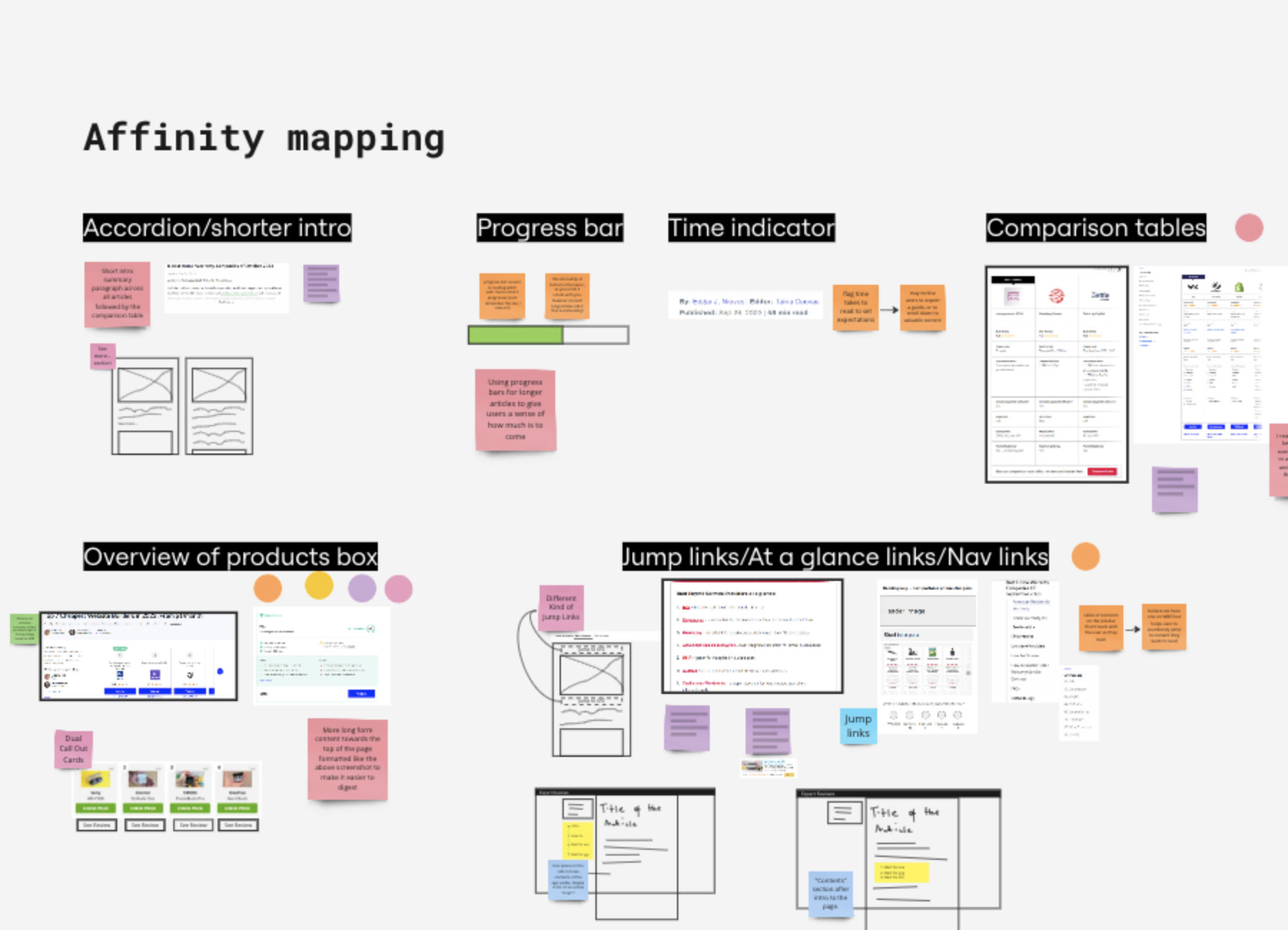Expert Reviews is a trusted review site built on a brand with a 34-year history of testing and reviewing products. A popular type of review on the site, known as a Best page, wasn’t doing as well as it could, and so I was asked to facilitate an ideation session to help the team come up with some solutions.
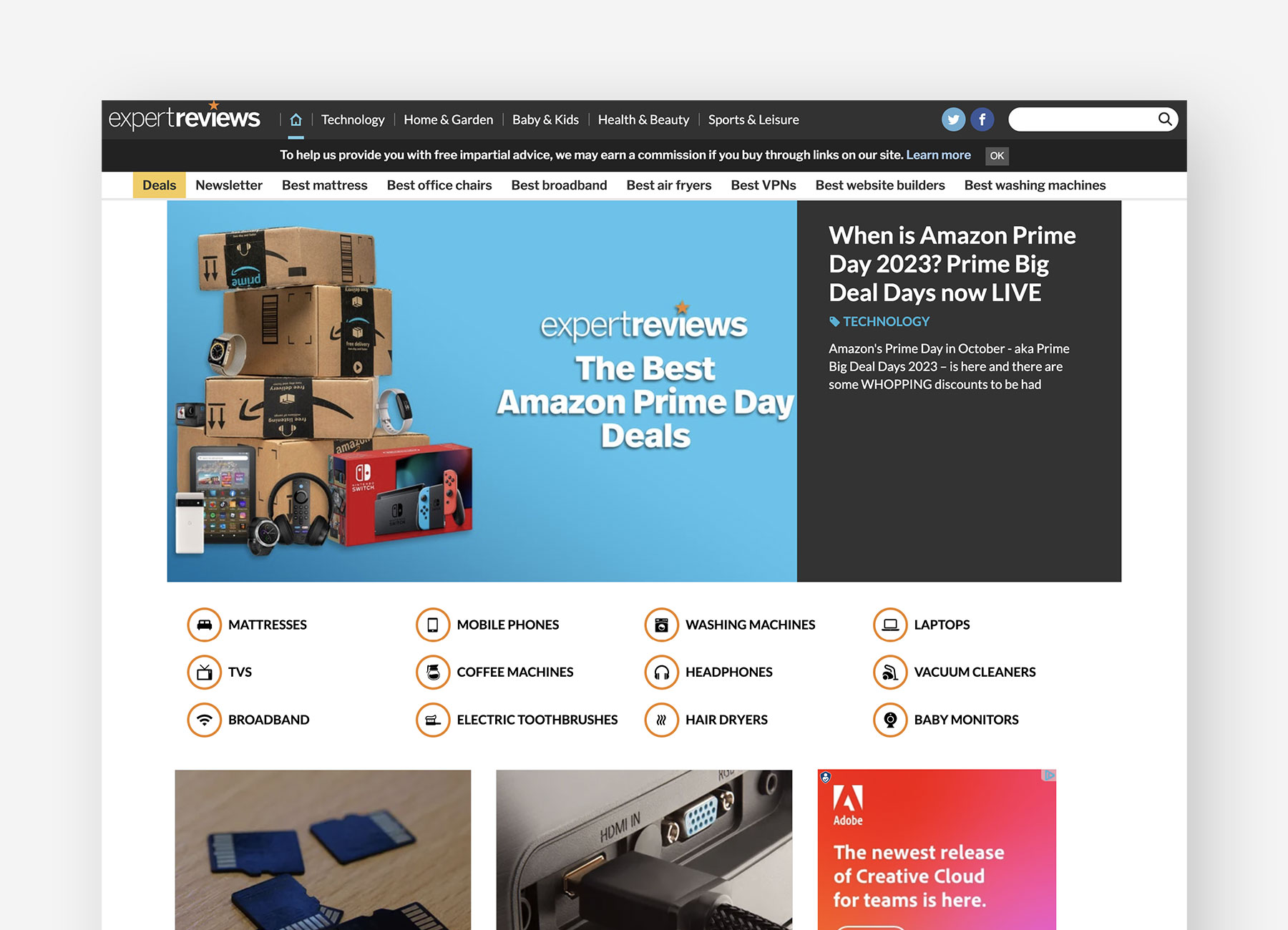
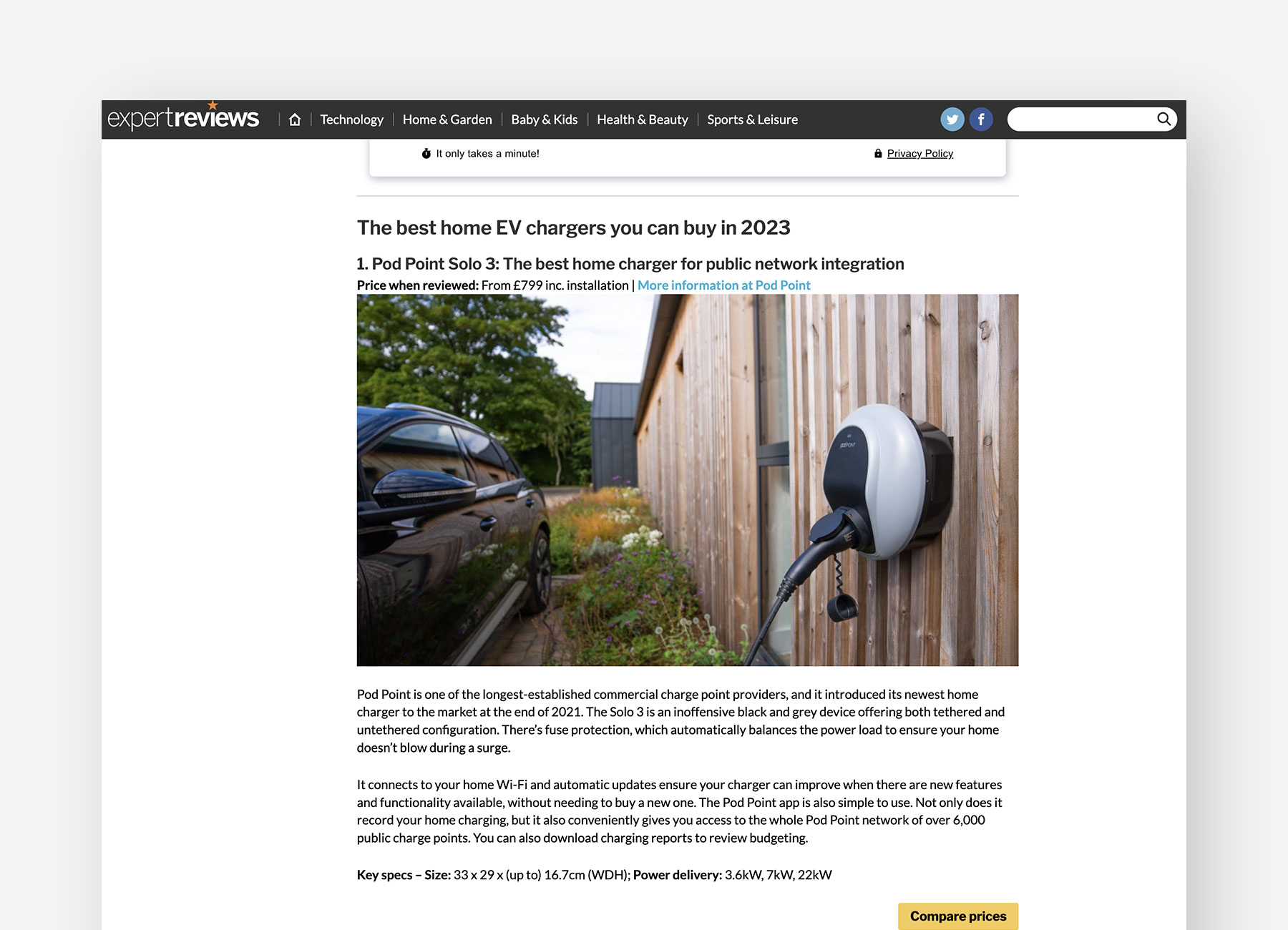
A colleague conducted an exit survey on a few best pages to gather info on how the pages were letting our users down. The biggest opportunity uncovered was around the most useful content being buried low down the pages, with lots of helpful though secondary content being served first. The primary review content our users visit our pages for could only be found 25%-40% of the way down the page.
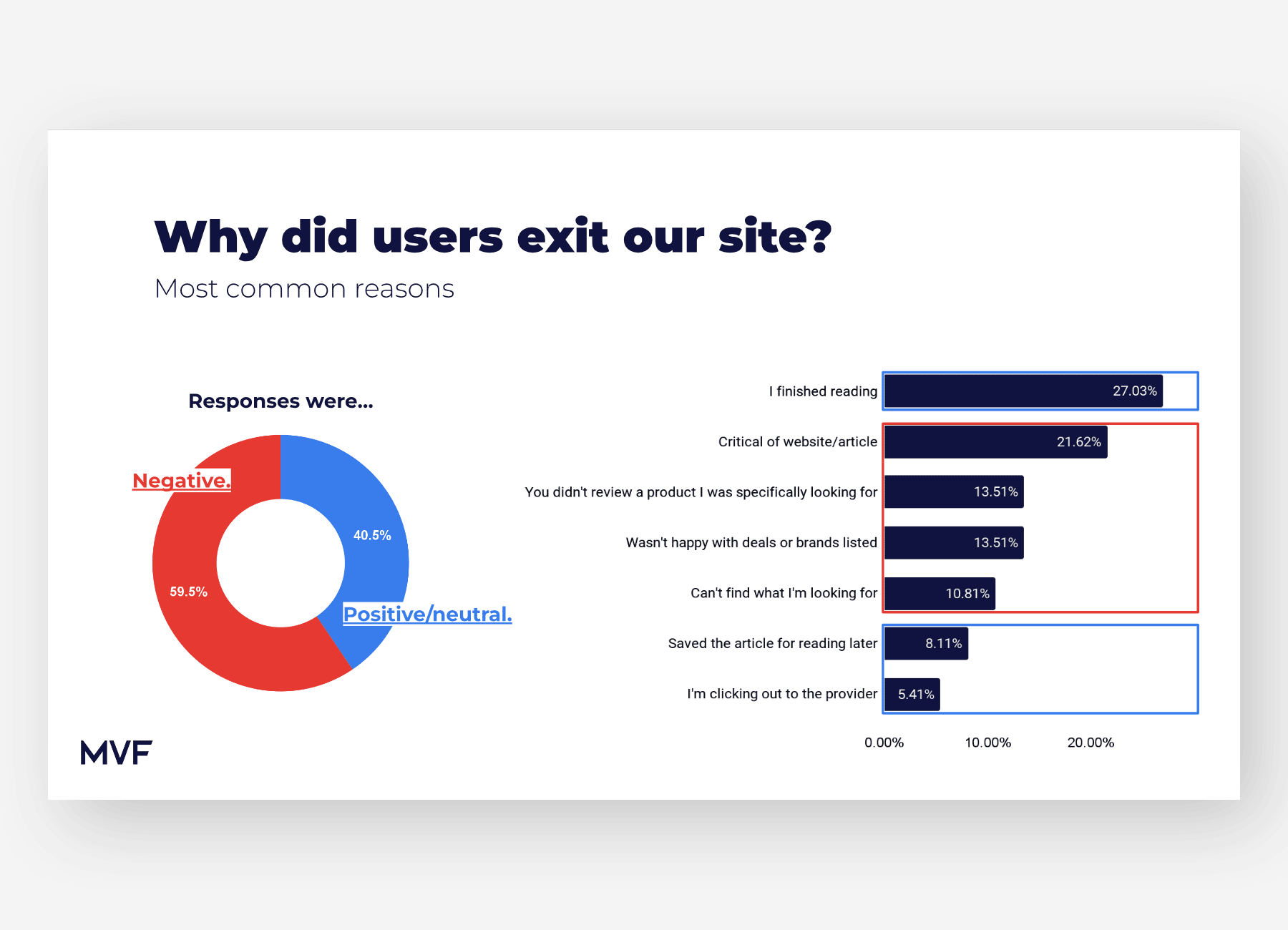
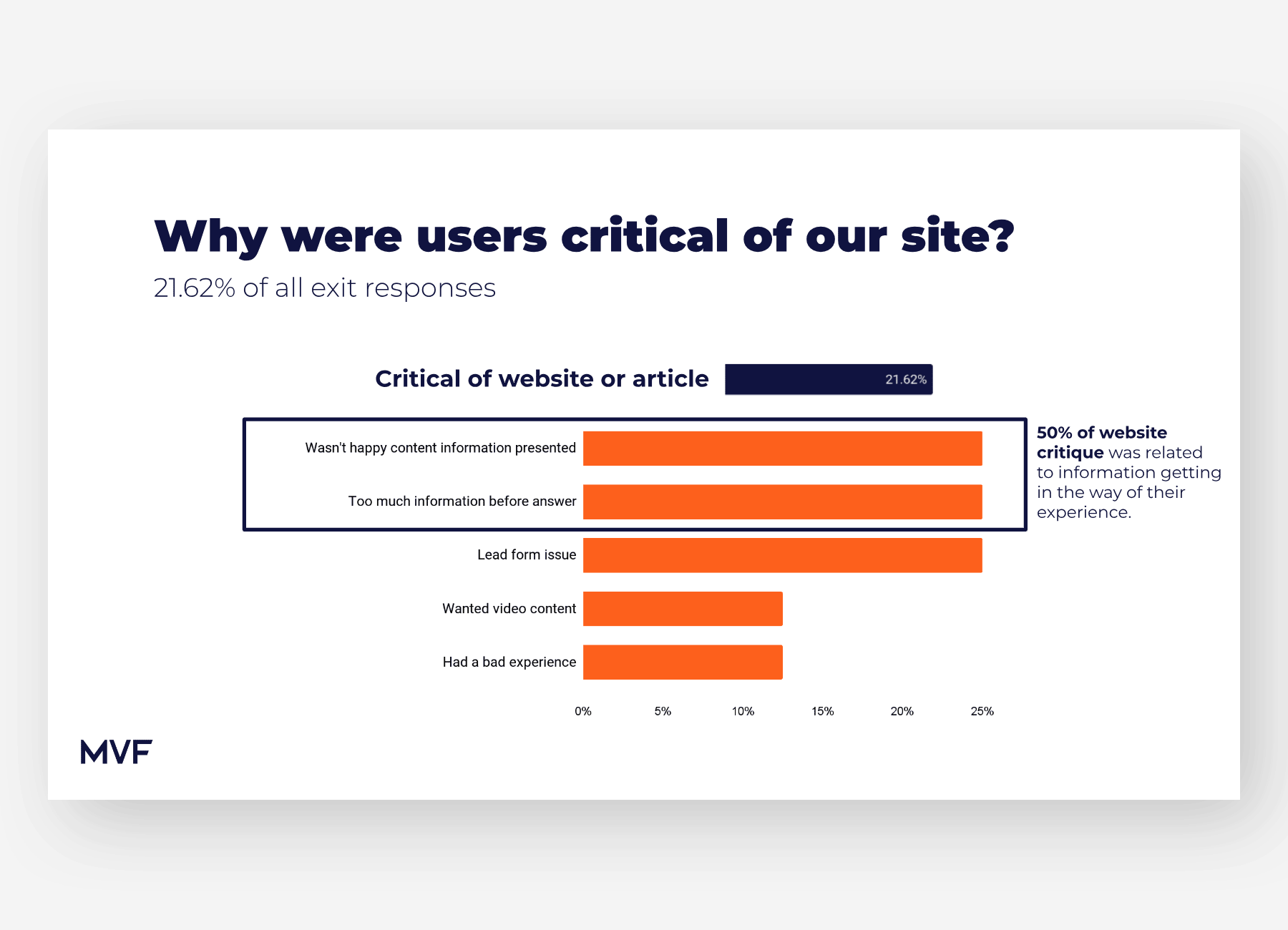
My colleague and I discussed the problem and decided to hold an ideation to find solutions to test. I tasked him with gathering all of the known information that would support the process: the exit survey analysis, best page example URLs, Google Analytics device info and a list of competitors with the same type of review pages. I then took to Miro to set up the ideation.
I split the board into 4 chunks – Intro, Inform, Inspire and Ideate, and populated each section with info and tasks.
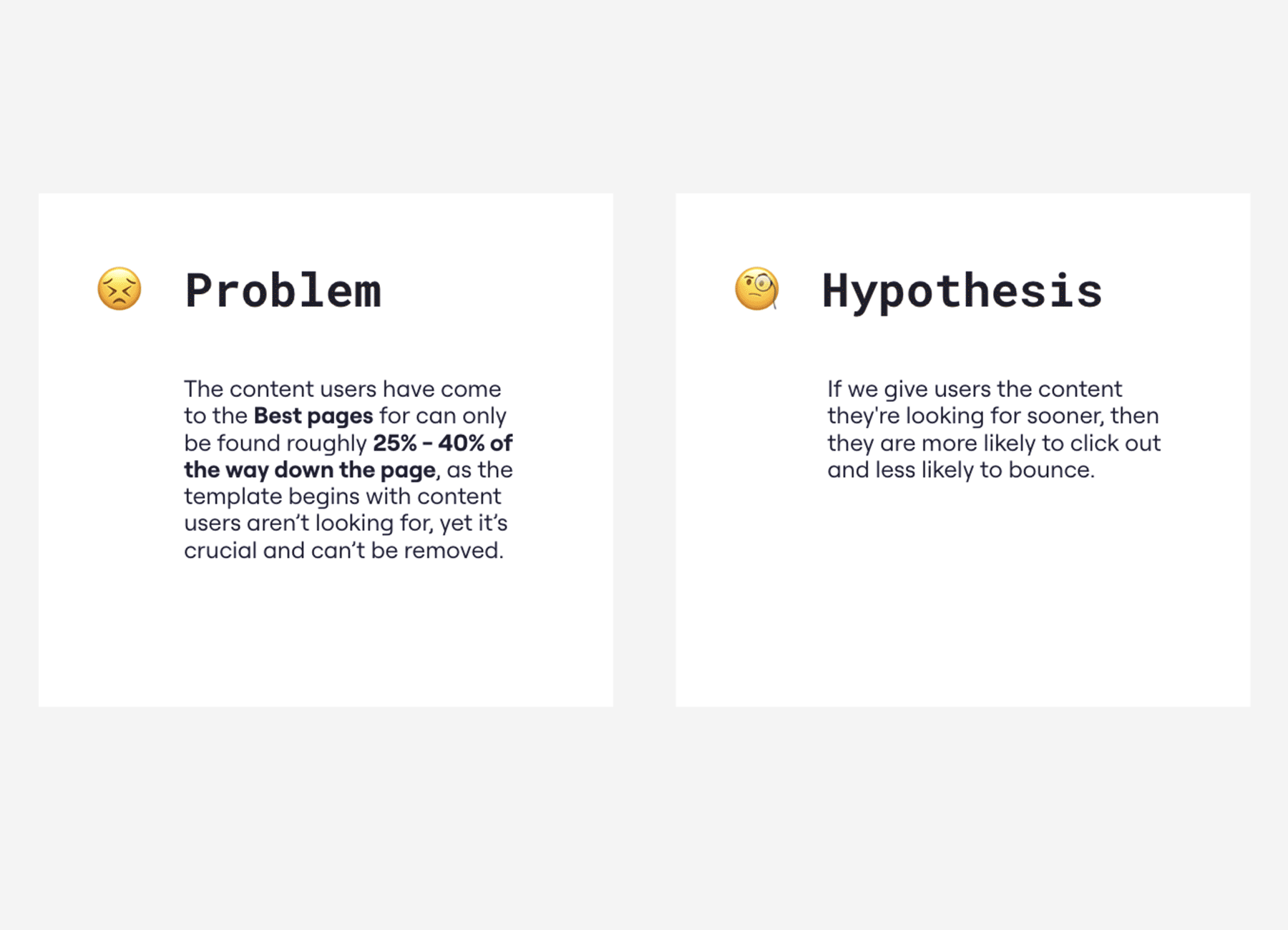
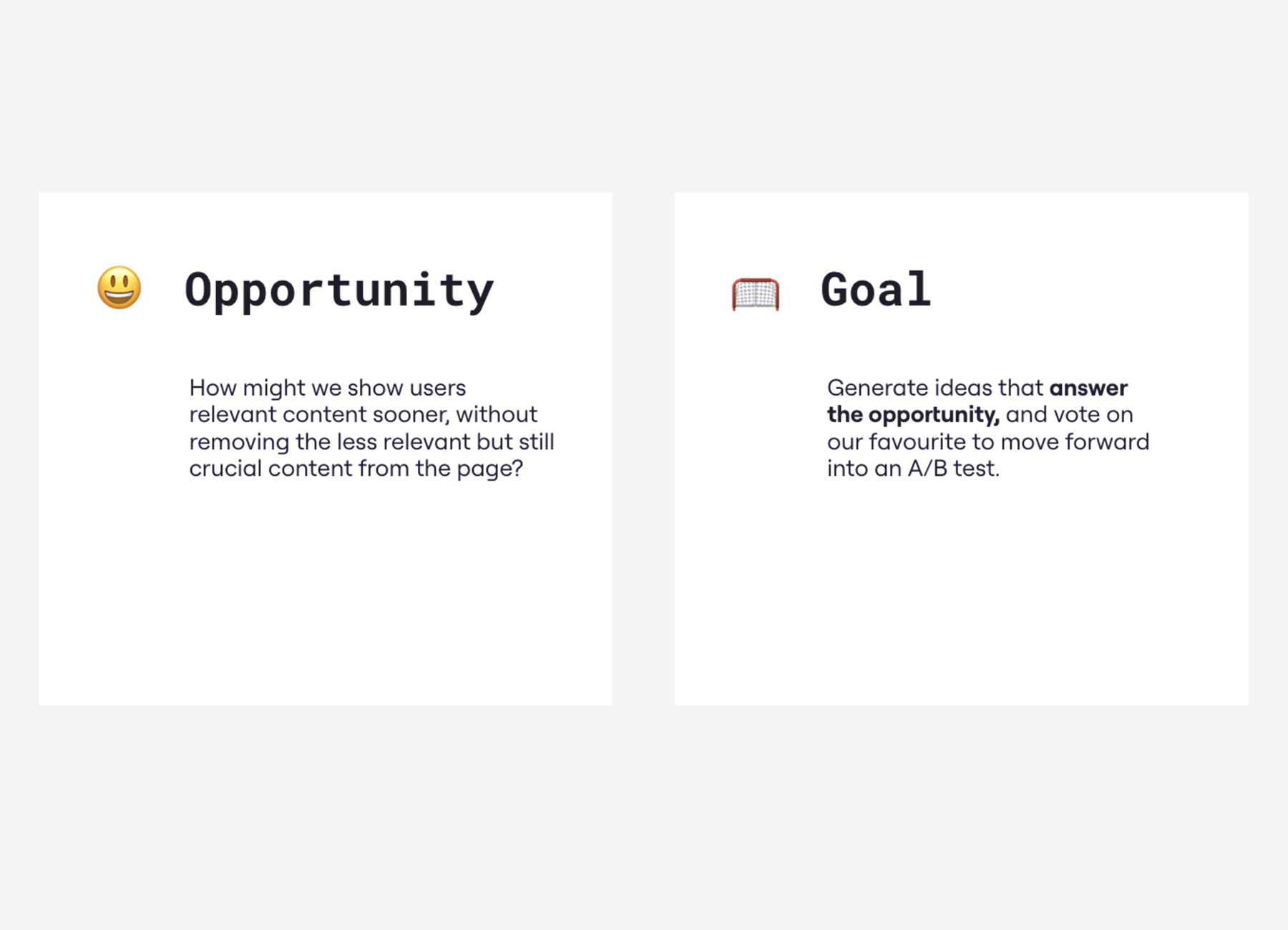
I used the Intro section to present the problem and included screenshots of an example page, highlighting how far down the primary info was buried. I then took the problem and reframed it as an opportunity with a How Might We – reframing it into a positive but also a question to answer with solutions later. I added the hypothesis that we would test solutions against and finally, covered the goal of the session.
This section of the board covered all of the information that we know about our users and the problem we’re solving. It included key findings from the exit survey as well as the device split of our audience. Because this information came from my colleague, I decided that at this point in the session, I would hand over to him to go through the content to ensure that information is conveyed with full understanding.
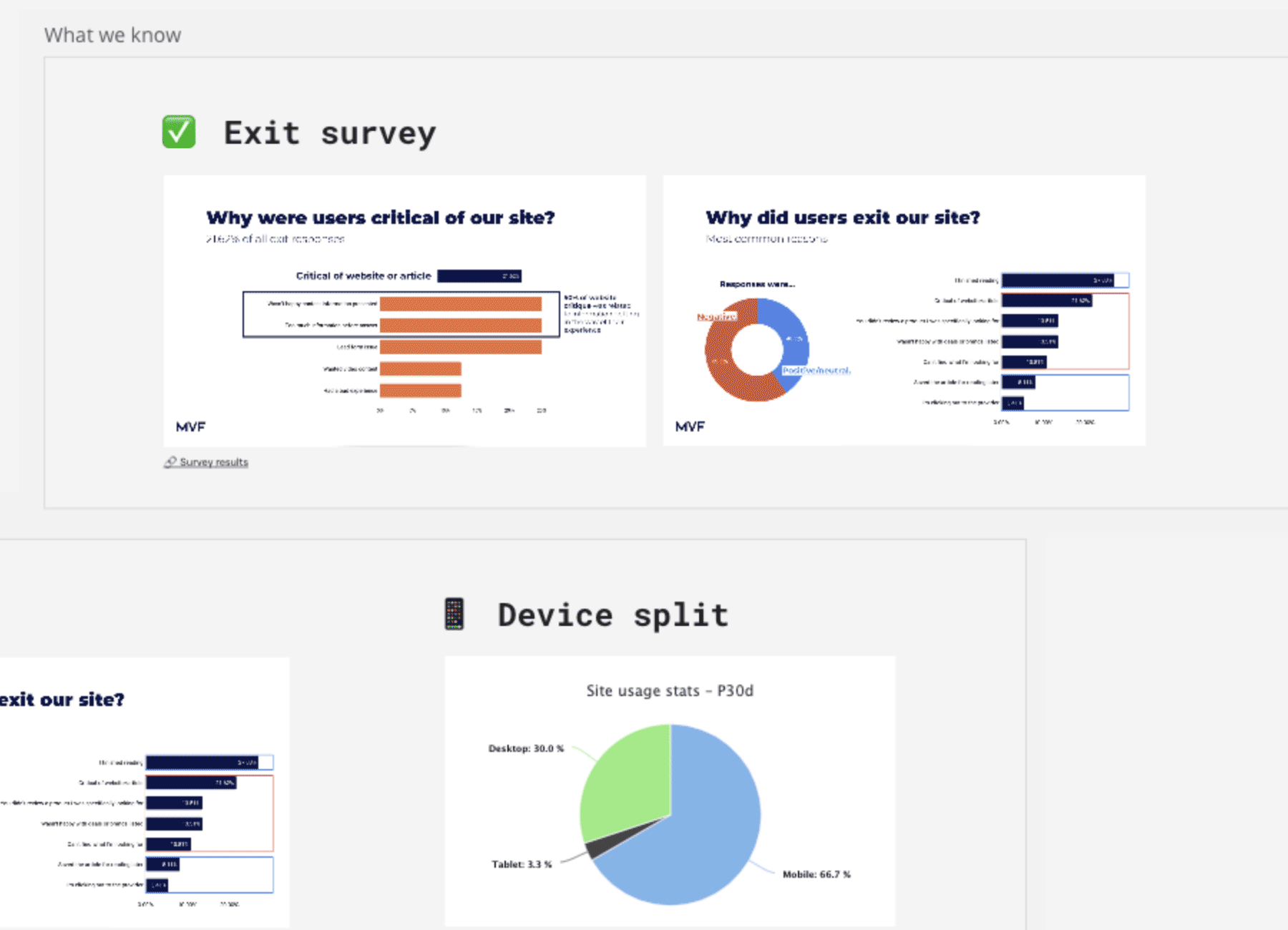
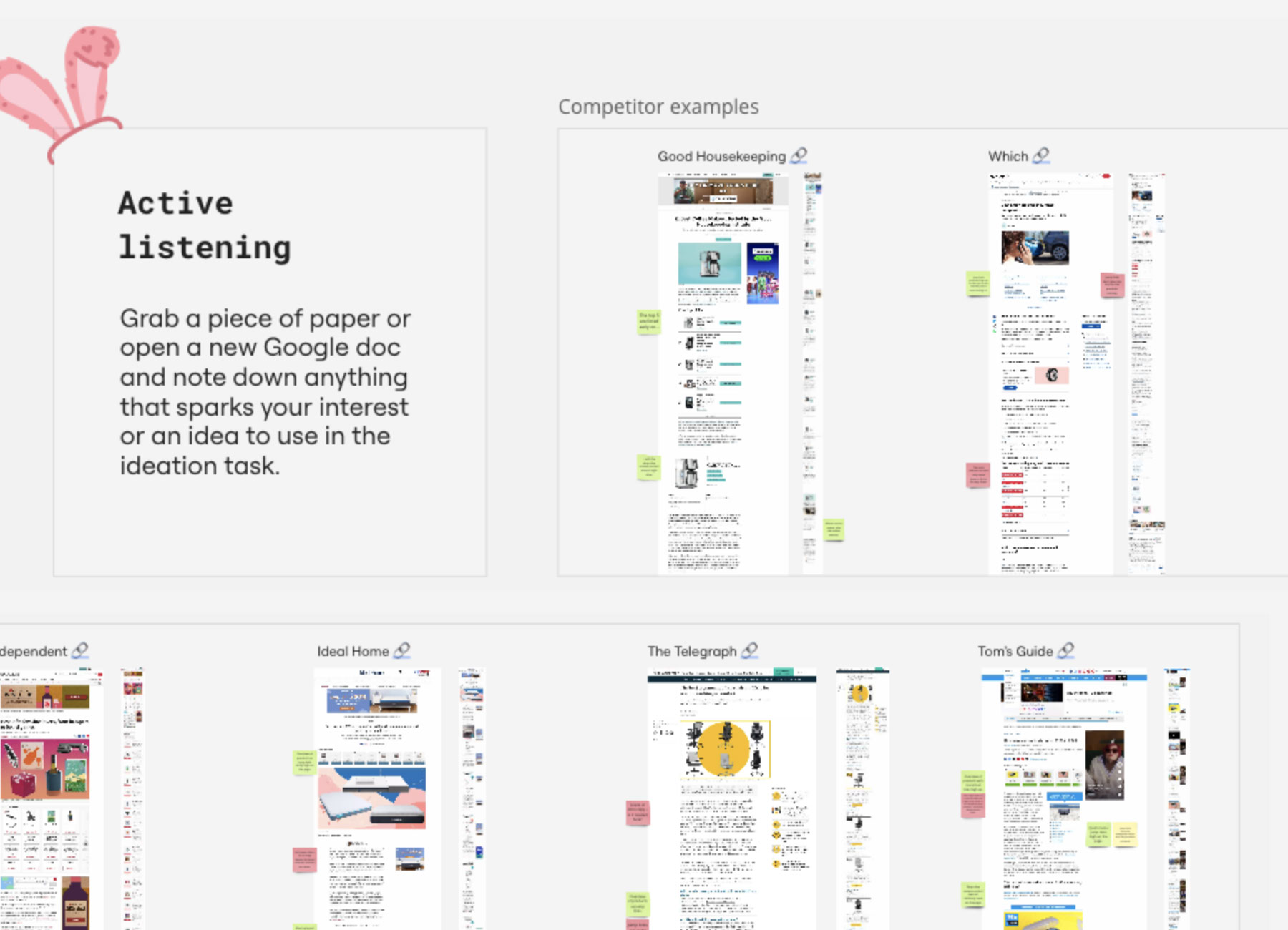
With a list of competitor URLs, I took screenshots of each example and conducted a competitor analysis from the viewpoint of users coming to the page to discover the best "X". Using sticky notes, I highlighted any content and hierarchy that seemed useful for users, and any that fell short. Next, I included an example from one of our other MVF brands with the same ‘Best page’ review style – Startups – and highlighted the gain and pain points there.
Due to the volume of content to digest in this section, I turned it into an active listening task so that participants wouldn’t get bored and could take notes of anything that sparked their interest.


The final section started with instructions which covered timings and also examples of how to get your ideas down. Fully aware that not everyone is a visual thinker, I included examples of screenshots, ideas using stickies, as well as methods for sketching. I created a sandbox for every participant and started them off with 3 stickies each – all colour coded to keep it fun. I included a space for affinity mapping should common themes emerge and created an area for voting.
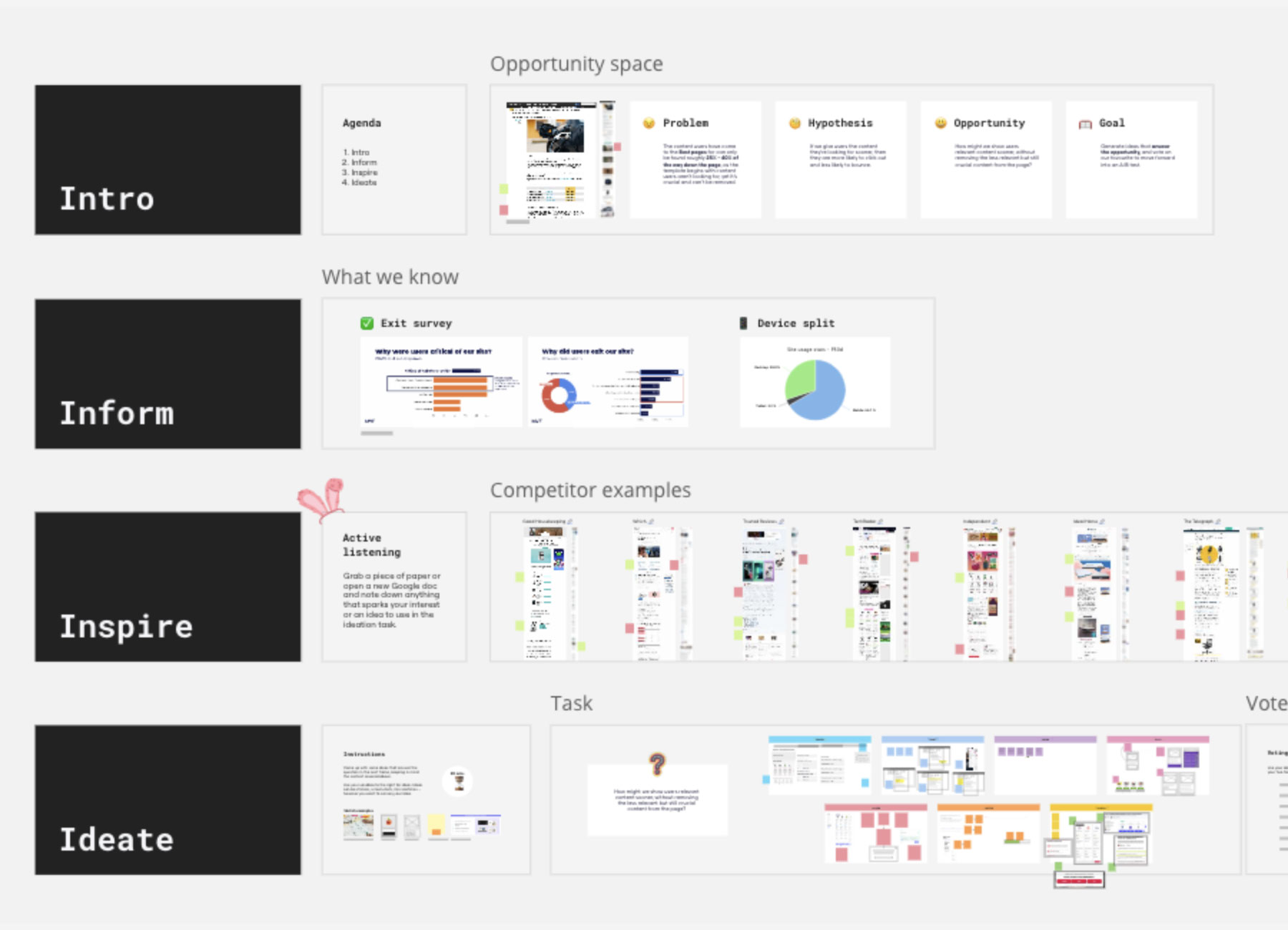
We had 7 participants for a remote session, with me as facilitator – with so many participants, there was no need for me to ideate as well. I took the group through each section, pausing to allow for questions and ensured everyone had understood before moving on. Once the group finished getting their ideas down, I gave them time to share their solutions with the team. I started by putting a timer on to keep the discussions tight but soon pivoted to no timer as I quickly realised the ideas were too plentiful. As the group presented their ideas, I affinity mapped them as themes began to emerge. I then had the team review the themes and change any they disagreed with. The group then voted and the session was over.
The session went well and my colleague was very pleased with the solutions that came out of the ideation.
I’ve held many ideations sessions before, but I learn something new each time. For this session, I learned to be more aware of the volume of ideas coming out and remove time restrictions on presenting if necessary – I had built enough time into the session for lengthy discussion so the timer was not needed here. I also learned that the volume and quality of solutions does differ a lot depending on which team you’re working with and which problem you’re tackling.
